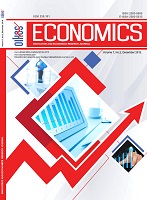Digital Village Transformation: A Model for Relativizing Regional Disparities in the Republic of Serbia
Digital Village Transformation: A Model for Relativizing Regional Disparities in the Republic of Serbia
Author(s): Aleksandar Manasijević, Marko Milojković, Dejan MastiloSubject(s): Demography and human biology, Rural and urban sociology, Economic development, Migration Studies, ICT Information and Communications Technologies
Published by: Oikos institut-Istraživački centar Bijeljina
Keywords: Regional development; regional disparities; village transformation; digital technologies; new model of regional development;
Summary/Abstract: The regional reality of the Republic of Serbia is characterized by strong regional disparities and adverse demographic trends. This situation is the result not only of inadequate actions of makers of macroeconomic policy and implementation of inefficient models of regional development in modern conditions, but of a long-term process of inheritance and deepening of regional disparities. The consequences of uneven regional development are numerous, and despite the economic ones, it is very important to emphasize the importance of non-economic consequences of uneven regional development. This primarily refers to the unfavorable demographic flows caused by the bipolarization of the state to the developed north and undeveloped south. Migratory trends in the Republic of Serbia can be observed in three different, however, interrelated processes. The first relates to migration from villages to cities, the second to migration from south to north and the third to migration directed beyond the borders of our country. These processes led to the extinction of the Serbian village and to the demographic emptying of the periphery of the Republic of Serbia. This is best supported by the fact that every fourth village is in the process of demographic disappearance, while every fourth agricultural resident of the Republic of Serbia is at risk of poverty. However, in the Zajecar district, the municipality of Sokobanja, one can notice the digital transformation of Vrmdža village, similar to the digital transformation of villages in developed countries. This transformation has attracted a large number of young families from this village doing business activities through the internet and modern digital technologies. The aim of this paper is to investigate the digital transformation of the village of Vrmdža by presenting a specific model of village transformation that can significantly contribute to the relativization of regional disparities in the Republic of Serbia.
Journal: ECONOMICS-INNOVATIVE AND ECONOMICS RESEARCH JOURNAL
- Issue Year: 7/2019
- Issue No: 2
- Page Range: 125-138
- Page Count: 14
- Language: English

